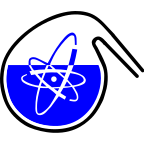Speaker
Description
Quaternary aeolian sediments, particularly loess–paleosol sequences constitute some of the longest and most detailed records of Quaternary climatic change and valuable data archives for paleoenvironmental reconstructions. In the Chinese Loess Plateau in north-central China, the loess horizons represent arid periods of increased influx of wind-blown dust when the dust-transporting winter monsoon was dominant. The paleosol horizons represent semi-arid periods of reduced aeolian deposition and intensified pedogenesis reflecting a reduced strength of northerly winds and an increased intensity of the summer monsoon blowing from south. About 175 m thick section of Quaternary loess–paleosol sediments exposed near Lingtai in the southwestern part of the Chinese Loess Plateau represents a key locality which reveals a succession of 33 loess-paleosol levels overlying the Upper Miocene Red Clay Formation and going back to about 2.6 Ma. A pilot research conducted between 1996 and 2000 by a joint Czech-Chinese team focused on younger Last Glacial age deposits that form the uppermost 15 meters of the section resulted in collection of about 80 loess and paleosol samples and discovery of two distinctive geomagnetic excursions identified as the Laschamp and Mono Lake geomagnetic field excursions.
To reveal changes in paleoclimate which may have been associated with the previously discovered geomagnetic events, detailed geochemical characterization of the Last Glacial loess-paleosol sample suite from the Lingtai section, achieved by combined use of instrumental neutron and photon activation analyses, is presented. The obtained geochemical data provide also a supporting evidence for a recently proposed theory of origin of Australasian tektites (AAT). The theory assumes that AAT and Chinese loess may have had common source materials in the desert area of northwest China, and locates there a hypothetical parent crater for AAT.
The study has been supported by the Czech Science Foundation within the project P108/12/G108, and by the Ministry of Education, Youth and Sports of the Czech Republic within the projects LM2015056 (CANAM - Center of Accelerators and Nuclear Analytical Methods) and LM2015074 (Nuclear Research Reactors LVR-15 and LR-0).

